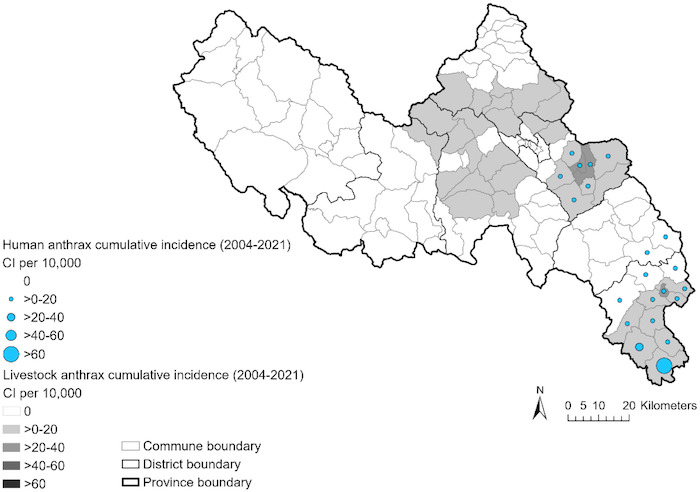
LUONG, BLACKBURN – Spatial Analysis of Human and Livestock Anthrax in Lai Chau Province, Vietnam (2004-2021)
Tan Luong, Do Kien Tran, Anh Hung Pham, Thi Thu-Ha Hoang, Van Khang Pham, Quang Thai Pham, Thi Mai Hung Tran, Minh Hoa Luong, Thanh Long Pham, Jason K. Blackburn
Article first published online: 20 October 2023
DOI: https://doi.org/10.1016/j.actatropica.2023.107044
ABSTRACT: Anthrax is reported globally with varying disease intensity and seasonality among countries. In Vietnam, anthrax epidemiology and ecology remain understudied. We used historical data of human and livestock anthrax from 2004-2021 in Lai Chau province, to identify spatial clusters of human and livestock anthrax, describe epidemiological characteristics, and compare livestock anthrax vaccine coverage to human and livestock disease incidence. Local Moran’s I (LISA) using spatial Bayes smoothed commune-level cumulative incidence (per 10000) for the study period, epidemiological descriptive statistics, livestock vaccine coverage data, and annual incidence rates (per 10000) at provincial level were used. LISA identified a human anthrax hotspot (high-high) in the southeast which did not overlap spatially with livestock anthrax hotspots in southeastern and northeastern communes. Most human cases were male, aged 15-59 years, handled sick animals, and/or consumed contaminated meat. Almost all cases were reported by grassroot health facilities with a delay of 6.3 days between exposure and case notification to the national surveillance system. 80% of human cases were reported from June-October. The increase in disease incidence occurred shortly after livestock anthrax vaccine coverage decreased. This study informs vaccination strategy and targeted surveillance and control measures in newly identified high-risk areas and seasons of anthrax.
Read the full publication in Acta Tropica.